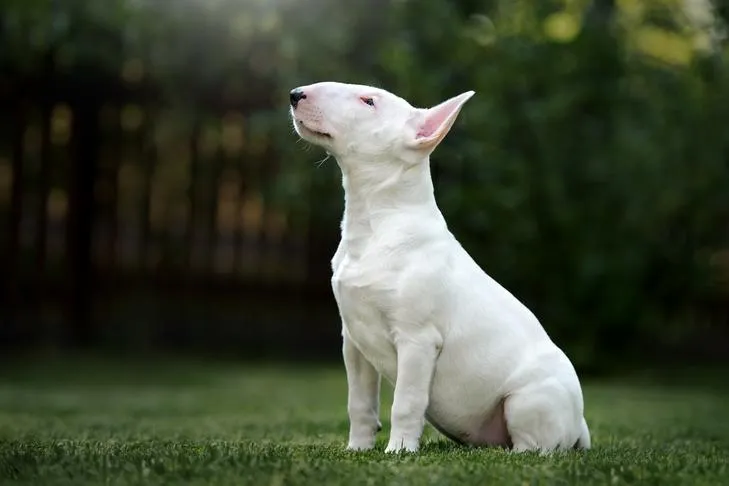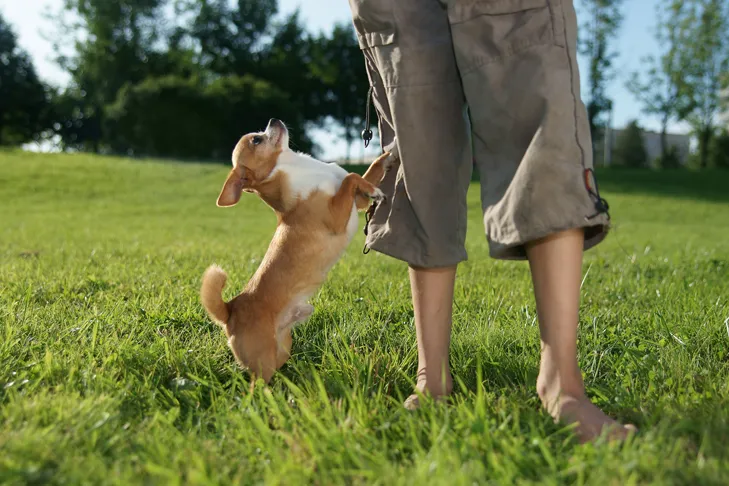Jumping up is a natural canine behavior, often an enthusiastic way for dogs to say hello and seek attention. From a dog’s perspective, it’s a highly effective strategy: jumping often leads to face-to-face greetings and is guaranteed to get a reaction. However, this common behavior can be frustrating, messy, and even dangerous for humans, especially for children or the elderly who could be easily knocked over by an excited dog. Muddy paws on clean clothes are also a frequent complaint. Teaching your dog an appropriate way to greet people is crucial for their safety, the safety of others, and for fostering polite interactions. This guide will provide actionable strategies to address this common issue. how to make a dog stop jumping
Why Dogs Jump on People
Dogs are masters at repeating behaviors that earn them rewards. When a dog jumps, any form of human attention—be it a friendly pat, an excited vocalization, or even a firm “No!”—can inadvertently reinforce the behavior. To a dog, negative reactions like yelling or pushing them away can still be perceived as engagement, or even part of a playful wrestling game. Essentially, if a dog gets attention, even if it’s unwanted attention from a human’s perspective, they’ve achieved their goal. This is why it’s vital to break the cycle of unintentional reinforcement.
To effectively eliminate jumping from your dog’s greeting repertoire, you must remove the rewards associated with the behavior. This involves a two-pronged approach: managing your dog’s environment to prevent opportunities for jumping, and proactively teaching them an alternative, more appropriate greeting behavior. Understanding this core principle is the foundation for successful training and a more harmonious relationship with your pet.
Teaching Polite Greeting Behaviors
While it might seem logical to simply ignore your dog when they jump, expecting the behavior to eventually cease, this approach often falls short in real-world scenarios. Every person your dog encounters won’t know the “ignore the jumper” rule, leading to inconsistent responses and frustration for your dog. Instead, it’s far more effective and humane to teach your dog what to do instead of just what not to do. The key is to replace the unwanted jumping with a desirable behavior, such as keeping all four paws on the floor or sitting politely for greetings.
Method 1: The “Four on the Floor” Approach
This technique teaches your dog to keep all four paws on the ground when greeting people by associating the desired behavior with immediate rewards. The goal is to prevent your dog from jumping by rewarding them before they even have a chance to leave the ground.
Follow these steps to train the “four on the floor” method:
- Start with your dog on a leash. Have a helper (a friend or family member) slowly approach your dog.
- Before the helper gets close enough for your dog to consider jumping, quickly toss several small, high-value treats directly onto the floor.
- As your dog focuses on eating the treats from the ground, have your helper calmly pet and greet them.
- Before your dog finishes eating the last treat, have the helper back away and disengage.
- Repeat these steps multiple times. As your dog consistently keeps all four paws down, gradually extend the greeting duration, continuing to toss treats on the floor throughout the entire interaction.
- Once your dog understands the connection, you can allow them to begin the greeting with the helper before you place the first treat on the ground.
- Over time, as your dog internalizes the rules, you can progressively reduce the number of treats until the polite greeting itself becomes the primary reward.
The success of this technique hinges on your speed and anticipation. You must be quick to provide the treats before your dog initiates a jump. If you are too late and your dog jumps, immediately have your helper turn and walk away, and stop providing treats. Your dog will quickly learn that keeping all four paws on the floor brings positive attention and treats, while jumping results in the loss of both. how do i stop my puppy jumping on the sofa
 A focused Bull Terrier puppy sitting patiently in a green yard, demonstrating good obedience during training.
A focused Bull Terrier puppy sitting patiently in a green yard, demonstrating good obedience during training.
Method 2: Training a “Sit” for Greetings
Teaching your dog to sit politely for greetings is another excellent alternative to jumping. With this method, your dog learns that a seated position is what earns them attention, praise, and pets. Conversely, standing up or jumping immediately stops all desired interaction.
Here’s how to teach your dog to sit for greetings:
- Tether your dog’s leash to a stable object like a doorknob or a sturdy piece of furniture.
- Stand several feet away and ask your dog to “Sit.” When they do, calmly approach. If your dog stands up, immediately turn and walk back to your starting point and ask for the “Sit” again. If they remain seated as you approach, gently praise and pet them. Continue greeting them as long as they stay sitting. The moment they stand up, turn and walk away without a word.
- As your dog starts to understand that sitting is key to receiving your greeting, you can gradually make your approaches more dynamic and exciting, simulating real-life greetings.
- Once your dog consistently masters sitting for greetings with you, repeat step one with various friends and family members. This generalization helps your dog understand the rule applies to everyone.
Consistent practice is vital for this exercise. Ensure your dog has a solid “Sit” command, even amidst distractions, before attempting to apply it to greetings. By having your dog sit before routines like going outside, getting their dinner, or receiving toys, you reinforce “Sit” as a natural “please” command, making it much easier to train for greetings.
 A calm Beagle dog sitting comfortably inside its open crate, showing a relaxed and managed state.
A calm Beagle dog sitting comfortably inside its open crate, showing a relaxed and managed state.
Preventing Jumping While You Train
Effective training isn’t just about teaching new behaviors; it’s also about managing your dog’s environment to prevent them from practicing unwanted actions. While you are actively teaching appropriate greeting behaviors, it’s critical to minimize any opportunities for your dog to jump on people. Every time your dog jumps and gets a reaction, it reinforces the habit, making your training efforts more challenging.
Consider these management techniques:
- Implement “Place” or Crate Training: If your dog knows a strong “go to your place” cue, send them to their mat or crate when the doorbell rings or when guests arrive. This provides a safe, contained space where they can’t practice jumping.
- Utilize Physical Barriers: Dog gates at entryways or in your living space can prevent your dog from rushing visitors.
- Leash Management: Keeping your dog on a leash when guests arrive allows you to maintain control and redirect them away from jumping. This is particularly useful for teaching how to stop a dog jumping on guests.
- Strategic Distractions: Keep a stash of high-value toys or treats near your front door. When a visitor enters, you can toss a treat or toy away from the doorway to occupy your dog’s attention. Your guest can also use these rewards to reinforce polite greetings.
- Managing Street Greetings: Preventing jumping can be especially challenging when walking your dog, as strangers may not understand or follow your training rules. Until your dog is consistently polite with friends and family, try to avoid direct greetings with strangers. Instead, use a “watch me” cue or squeak a toy to get your dog’s attention as the person walks past.
- Educate Others: When your dog is ready to greet people on the street, communicate your training process. Politely ask people to ignore your dog if they don’t follow the rules you’ve established. This consistency is vital for reinforcing polite behavior. Teaching a dog to stop pulling on leash can also improve control during street encounters.
 A small dog with muddy paws enthusiastically jumping up on a person, illustrating unwanted greeting behavior.
A small dog with muddy paws enthusiastically jumping up on a person, illustrating unwanted greeting behavior.
Conclusion
Training your dog to stop jumping on people requires patience, consistency, and a clear understanding of canine behavior. By focusing on teaching alternative, polite greeting behaviors like “four on the floor” or a “sit” command, and diligently managing their environment to prevent opportunities for unwanted jumping, you can reshape your dog’s habits. Remember that all training is a journey, and celebrating small successes will motivate both you and your dog. With dedicated practice, your dog will learn to greet people politely and calmly, leading to more enjoyable interactions and a happier coexistence for everyone.
